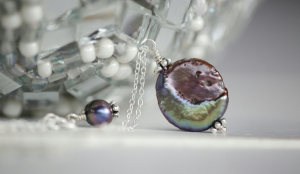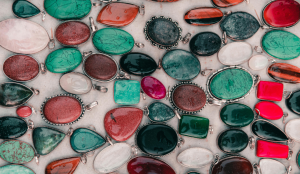As a jeweler, I’m often asked, “What makes a gemstone valuable?” While many factors contribute to a gemstone’s worth, color reigns supreme. It’s the first thing that catches the eye, the emotional connection we make with a stone. But color’s influence on value is complex, nuanced, and something I want to explore in detail here.
The King of Gemstone Value: Color
 Think about it: a vibrant blue sapphire, a fiery red ruby, a lush green emerald. These images evoke strong feelings, and that’s because of color. It’s the primary driver of desire, and consequently, a major determinant of a gemstone’s price. Experts like Al Gilbertson, a GIA researcher, have even quantified this, suggesting color can account for as much as 60% of a gemstone’s value. But it’s not simply having color that matters; it’s the quality of that color.
Think about it: a vibrant blue sapphire, a fiery red ruby, a lush green emerald. These images evoke strong feelings, and that’s because of color. It’s the primary driver of desire, and consequently, a major determinant of a gemstone’s price. Experts like Al Gilbertson, a GIA researcher, have even quantified this, suggesting color can account for as much as 60% of a gemstone’s value. But it’s not simply having color that matters; it’s the quality of that color.
Understanding the Three Dimensions of Color
When we talk about gemstone color, we’re not just talking about “red” or “blue.” Color is a three-dimensional concept, defined by:
Hue:
This is the pure color itself – red, blue, green, etc. It’s the gemstone’s primary color family, although it might include secondary hues. For example, a sapphire might be primarily blue, but with hints of violet.
Saturation:

This refers to the intensity or richness of the color. A highly saturated color is vibrant and vivid, while a less saturated color appears duller. Think of a deep, royal blue sapphire versus a pale, washed-out blue one. As a jeweler, I can tell you that higher saturation almost always translates to higher value.
Tone:
This describes the lightness or darkness of the color. It ranges from very light to very dark. The most valuable gemstones often have a medium to medium-dark tone, where the color is rich but not so dark that it appears dull.
The Interplay of Hue, Tone, and Saturation
These three dimensions work together to determine a gemstone’s overall color quality. The ideal combination varies depending on the type of gemstone. For instance, a “pigeon blood” red ruby is prized for its intense, vivid red hue, medium tone, and high saturation. Any deviation from this ideal – a brownish tint, a too-dark tone, or low saturation – will diminish its value.
for more visit :
What is the relationship between hue, saturation and value?
Rarity and Color: A Powerful Combination
Some colors are simply rarer than others, and this rarity significantly impacts value. Pink diamonds, for example, are among the rarest and most expensive gemstones in the world. Their delicate blush hue, ranging from soft pink to vibrant pinkish-red, is highly sought after. Similarly, Paraiba tourmalines, with their electrifying neon-blue to green color, are incredibly rare due to their unique copper content, making them extremely valuable.
Beyond the 4Cs: Other Factors Influencing Color Value
While the traditional 4Cs (Cut, Color, Clarity, and Carat weight) are important, several other factors interact with color to affect value:
Origin:

The geographic origin of a gemstone can play a significant role in its value, especially for certain gems like Kashmir sapphires or Colombian emeralds. These locations have a reputation for producing exceptional quality stones.
Pleochroism:
Some gemstones, like tanzanite, exhibit pleochroism, meaning they show different colors when viewed from different angles. Skilled cutters can use this to their advantage, orienting the stone to display the most desirable color.
Color Zoning:
Uneven color distribution within a gemstone is called color zoning. While generally undesirable, some gems, like ametrine, are valued for their distinct color zoning. As a jeweler, I’ve seen how skillfully cut stones can showcase this zoning to create stunning visual effects.
Treatments :
Gemstone treatments, such as heat treatment or irradiation, can enhance color. While these treatments are common, they can affect a gemstone’s value. Natural, untreated gemstones with exceptional color are generally more valuable.
Light’s Role in Color Perception
Light plays a crucial role in how we perceive a gemstone’s color. Different light sources can make a gemstone appear different. Natural sunlight, for example, often makes colors appear more vibrant, while incandescent light can emphasize warmer tones. This is why it’s important to view gemstones under various lighting conditions. The transparency of a gemstone also affects how light interacts with it, enhancing its brilliance and color vibrancy. for more visit :
The Best Gemstones to Own By Ramil Abalkhad
The Evolving Landscape of Gemstone Color
As a jeweler in 2025, I’ve noticed an increasing demand for less common hues, like pastel sapphires and morganite. While traditionally, intense, saturated colors were favored, modern tastes are embracing softer, more subtle shades. This shift in preference demonstrates how trends and fashion influence the gemstone market.
FAQs
Do gemstones increase in value?
Generally, yes, gemstones can increase in value over time, especially rare and high-quality ones. However, like any investment, there are no guarantees. Factors like market demand, rarity, and the overall condition of the gemstone play a significant role. As a jeweler, I advise clients to focus on acquiring beautiful, high-quality stones that they love, rather than solely focusing on potential appreciation.
Are colored gemstones a good investment?
Colored gemstones can be a good investment, but it’s essential to do your research and work with a reputable jeweler like myself. Focus on acquiring high-quality stones with desirable color, clarity, cut, and carat weight. Rarity also plays a crucial role. While some gemstones appreciate significantly, others may not. It’s best to consider colored gemstones as part of a diversified portfolio and appreciate them for their beauty as well as their potential investment value.
What determines the value of a gemstone?
Many factors contribute to a gemstone’s value, including:
Color: As discussed extensively in this blog, color is paramount.
Clarity: The absence of inclusions (internal flaws) generally increases value.
Cut: A well-executed cut maximizes brilliance and fire.
Carat Weight: Larger gemstones are often more valuable, but not always. Quality trumps size.
Origin: Some locations are known for producing exceptional gemstones.
Rarity: Rare gemstones command higher prices.
Treatments: Natural, untreated gemstones are generally more valuable.
How are gemstones used in jewelry?
Gemstones are incredibly versatile and are used in a wide range of jewelry pieces, including:
Rings: Gemstones are often the centerpiece of rings, especially engagement rings.
Necklaces: Pendants and gemstone necklaces can make a stunning statement.
Earrings: Gemstone earrings can add a touch of elegance and color to any outfit.
Bracelets: Gemstone bracelets can be delicate or bold, depending on the design.
Brooches: Brooches can showcase beautiful gemstones and add a touch of vintage flair.
Ramil Abalkhad’s Perspective
In my experience, the best gemstones possess a “wow” factor. They captivate you with their color, brilliance, and overall beauty. While the science behind color is fascinating, ultimately, it’s the emotional connection that drives value. Whether it’s a classic blue sapphire or a rare pink diamond, a gemstone’s color speaks to us on a personal level, making it a truly cherished piece of jewelry. I encourage you to explore the world of gemstones, appreciate the nuances of color, and find the stone that speaks to you.
